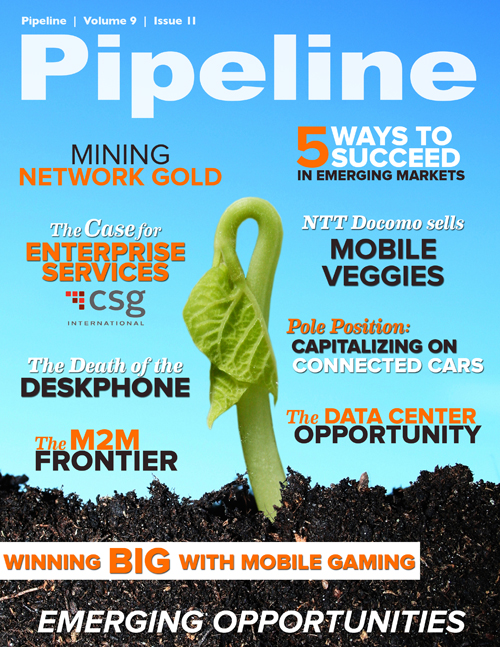Why Is a Mobile Operator Selling Groceries? Because It Can.
By developing the platform in-house, Telefónica has the flexibility to add new functionalities and further adapt it to fit customers’ needs. The Smart M2M Solution is already commercially available to Telefónica customers in Brazil and Spain and will soon be expanded to other countries, starting with Chile, Argentina and Czech Republic.
Granted, the new services being offered and developed by CSPs are cool, but it’s the networks and their underlying architecture that will really rev up future ingenuity. “Given the pace of innovation around apps and mobile devices, carriers’ models are still evolving as the infrastructure catches up with these new demands,” says Jon Pelson. “Each carrier is spending serious time thinking and strategizing.”
As networks become more flexible, so do the services they support. Priya Natarajan, enterprise segment lead for software marketing at Juniper Networks, says that in addition to spending money on R&D for new market opportunities, CSPs must spend just as aggressively to construct networks that are resilient enough to get new services off the ground quickly and cheaply. “Infrastructure is such a critical component of business-model innovation, so operators that choose to invest in building their network will face fewer limitations and can accelerate time to market for new opportunities.”
Embracing network virtualization is one way CSPs can prepare to capitalize on new services.
“Virtualization is a popular trend in the networking space right now because it allows for much quicker provisioning of new applications, services and resources to meet the demands of mobile consumers,” Natarajan says. “Virtualizing the network infrastructure [and] making the network virtual instead of physical to reduce costs and improve network performance and scalability unleashes innovation and adoption of new technology for operators.” She adds that the right platform can make it possible for a CSP to “rapidly explore virtualizing services such as caching or customer-premises equipment to allow for a better user experience.”
An operator’s ability to swiftly roll out new services is dependent on its network’s infrastructure. But instead of having a network with a traditional fixed infrastructure, a CSP needs one that’s both dynamic and elastic as well as programmable.
“The traditional setup was about building an infrastructure and waiting for customers to come,” Natarajan says. “In other cases the infrastructure always fell behind customer demand. A virtualized network enables operators to scale capacity exactly to meet demand. This ensures that money is not tied up in both equipment and operating costs. Furthermore, with limited investment operators can expand into new markets and then grow the network as the business grows. This offers great flexibility in deployment, reduces operational and capital expenditure and accelerates time to market for new services, which in turn makes customers happy.”
According to Jose Romero, director of marketing and technology at Movius, a CSP must supply ubiquitous Wi-Fi and LTE coverage for its customers if it hopes to compete in the area of new services.
“How carriers deliver and assure content, and how it’s billed when a customer is riding small cells’ backbone Wi-Fi network, will become key considerations with the advent of these new network extensions,” he says. “They need to build out the small cells, and they need to get LTE and Wi-Fi deployed everywhere.”
Romero adds that CSPs “need different ways to track and monitor service quality because they can no longer analyze all network data, given the surge in volume.” They must also “become selective in terms of what info gets captured, stored, sorted, retrieved, and acted upon,” and, finally, they “need to create far more flexible policy tools to manage what people can and can’t do on the network.”
Whether they’re selling organic vegetables or delivering movies on demand, CSPs are on the cusp of endless possibilities. Consumers already have an established connection and relationship with their provider’s network, and in the near future most, if not all, business will make use of that connection. CSPs will find new service opportunities wherever they look, but those that focus on continually building a network supple enough to handle everything from geofencing to geothermal data will be the ones that rise to the top of the heap.



















